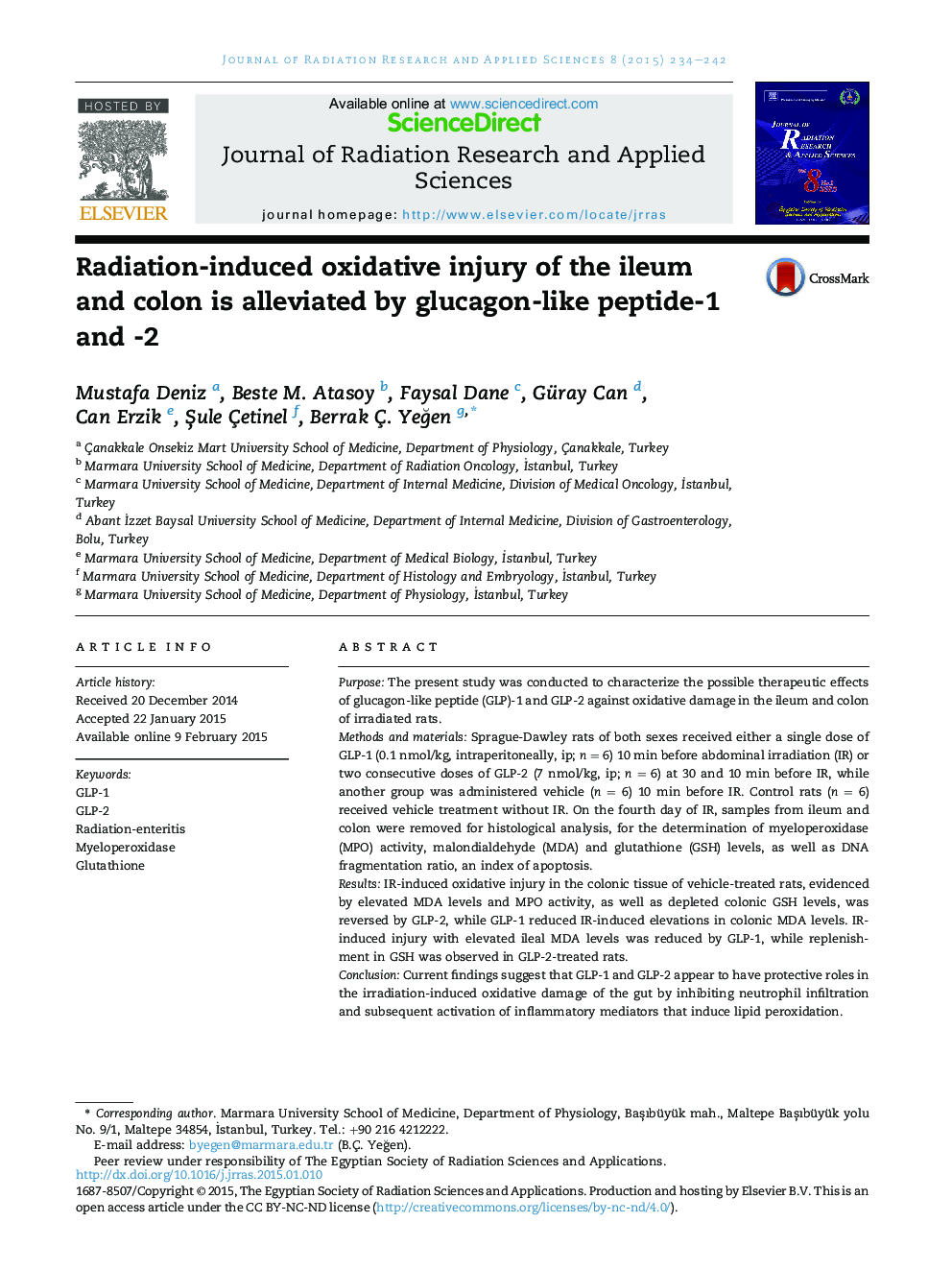| Article ID | Journal | Published Year | Pages | File Type |
|---|---|---|---|---|
| 1570381 | Journal of Radiation Research and Applied Sciences | 2015 | 9 Pages |
PurposeThe present study was conducted to characterize the possible therapeutic effects of glucagon-like peptide (GLP)-1 and GLP-2 against oxidative damage in the ileum and colon of irradiated rats.Methods and materialsSprague-Dawley rats of both sexes received either a single dose of GLP-1 (0.1 nmol/kg, intraperitoneally, ip; n = 6) 10 min before abdominal irradiation (IR) or two consecutive doses of GLP-2 (7 nmol/kg, ip; n = 6) at 30 and 10 min before IR, while another group was administered vehicle (n = 6) 10 min before IR. Control rats (n = 6) received vehicle treatment without IR. On the fourth day of IR, samples from ileum and colon were removed for histological analysis, for the determination of myeloperoxidase (MPO) activity, malondialdehyde (MDA) and glutathione (GSH) levels, as well as DNA fragmentation ratio, an index of apoptosis.ResultsIR-induced oxidative injury in the colonic tissue of vehicle-treated rats, evidenced by elevated MDA levels and MPO activity, as well as depleted colonic GSH levels, was reversed by GLP-2, while GLP-1 reduced IR-induced elevations in colonic MDA levels. IR-induced injury with elevated ileal MDA levels was reduced by GLP-1, while replenishment in GSH was observed in GLP-2-treated rats.ConclusionCurrent findings suggest that GLP-1 and GLP-2 appear to have protective roles in the irradiation-induced oxidative damage of the gut by inhibiting neutrophil infiltration and subsequent activation of inflammatory mediators that induce lipid peroxidation.
